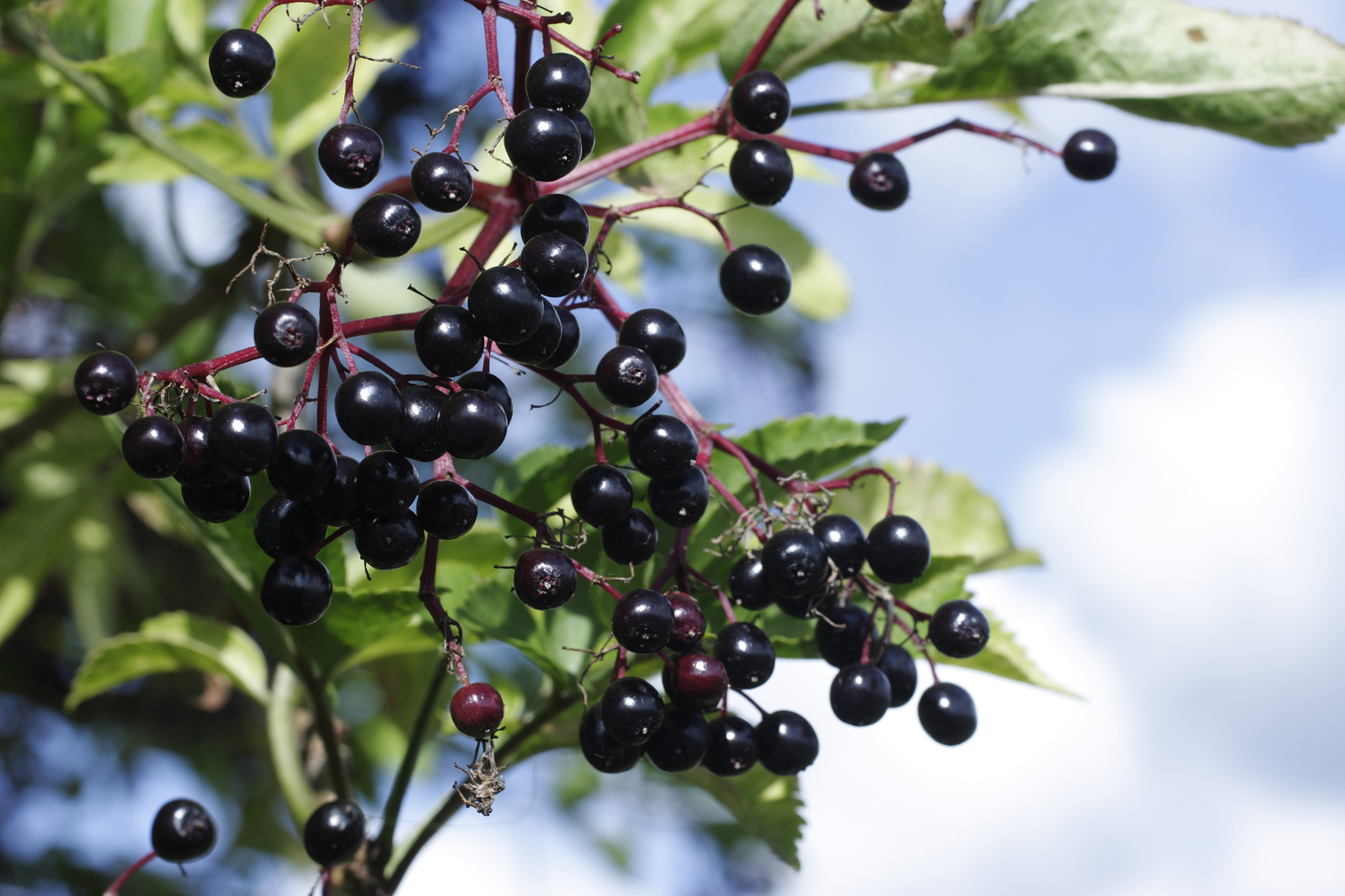Elderberry
Elderberries are small, vibrant fruits heralded for their health benefits and distinctive taste. These berries, native to various parts of the world, also find their home in Alberta, where specific species have adapted to the province's unique climate and terrain. In Alberta, the melding of traditional knowledge with modern practices has propelled elderberries to the forefront of both natural remedies and culinary innovations.

More on Elderberry
About
Elderberries hail from the Sambucus genus, and in Alberta, two primary species stand out: Sambucus racemosa (Red Elderberry) and Sambucus nigra ssp. canadensis (Common Elderberry). While the red elderberry displays bright red berries typically growing in conical clusters, the common elderberry showcases darker, almost black berries. These shrubs thrive in diverse environments across Alberta, from wet, wooded areas to sun-drenched open spaces.
History
Elderberries, with their rich history rooted in indigenous traditions, have been an integral part of Alberta's landscape long before European settlers arrived. Indigenous communities revered them for their medicinal properties, a sentiment later adopted and integrated into the settlers' practices. As Alberta evolved, so did the understanding and utilization of these berries, transitioning from purely medicinal applications to culinary experiments and delights.
Ways To Cook
Both species of elderberries offer a world of culinary possibilities. Red elderberries, slightly more bitter, are often transformed into jams, jellies, or syrups after careful cooking. Common elderberries, with their sweeter undertones, find their way into pies, wines, and even sauces that complement Alberta's wild game. Regardless of the species, it's essential to cook elderberries to neutralize potential toxins. Elderberry flowers are also commonly used to make wine, syrup, teas, and cordial.
As Alberta's culinary scene evolves, elderberries remain a testament to the province's ability to blend tradition with innovation, creating dishes and remedies that resonate with its rich history.
Some Of Our Favourite Videos
Alberta Elderberry Producers
Somerset Farms
About this producerFoods from this producer:
